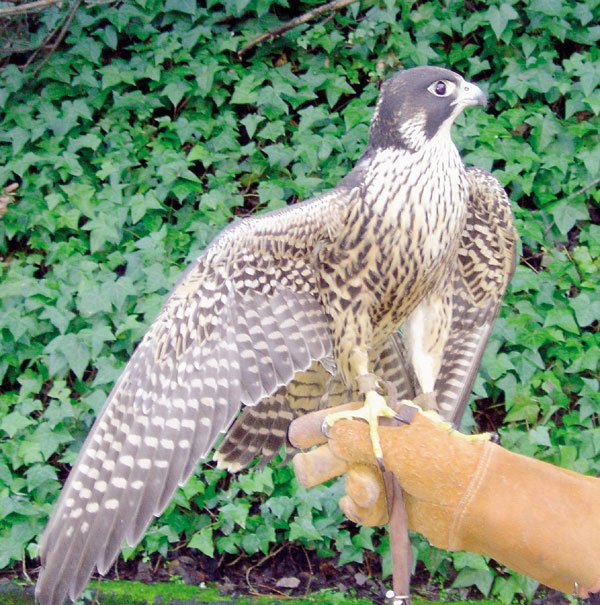It’s a bird! It’s a plane! It’s Superman! No, you were right the
first time. The Peregrine Falcon is the fastest bird in the world,
reaching diving speeds of 200 miles per hour. Using much the same
form as a speeding bullet, the Peregrine folds its wings against
its body and hurdles downward in a steep dive to knock out a flying
bird
– the exclusive prey of the Falcon – and snatch it while still
in the air.
By The Wildlife Education and Rehabilitation Center
It’s a bird! It’s a plane! It’s Superman! No, you were right the first time. The Peregrine Falcon is the fastest bird in the world, reaching diving speeds of 200 miles per hour. Using much the same form as a speeding bullet, the Peregrine folds its wings against its body and hurdles downward in a steep dive to knock out a flying bird – the exclusive prey of the Falcon – and snatch it while still in the air.
The Peregrine resides year-round along most of western California and can be found on every continent except Antarctica. It’s a very adaptable bird, hence its name, Falco peregrinus, which means “wandering or pilgrim” falcon. However, it is relatively uncommon in the United States and is federally listed as threatened, though the species is making a comeback.
In August, Gilroy resident Michele Clonts was working in her garage when her two young children, Margo and Caden, called out that a bird had suddenly dropped off the roof onto the driveway. It was apparent that the bird had been badly injured and was unable to fly away.
Michele cast a blanket over the raptor to capture it safely and avoid its razor-sharp beak and talons. She then placed it in a box and brought it to the Wildlife Education and Rehabilitation Center. The bird’s left wing was severely drooping and was raw and bleeding.
WERC’s skilled volunteers quickly determined that the bird, a Peregrine Falcon, was in dire need of immediate medical attention by a veterinarian. The X-rays showed there was a radial ulna dislocation at the elbow. It is very likely that the Peregrine had hit an object or building while diving in on its prey.
The wing was wrapped to prevent further injury and to aid healing, but it was evident that the damage was permanent, and the bird would never again have the perfect flight that is absolutely essential for survival in the wild. He is only able to fly a short distance from perch to perch. Fortunately, after several months of recuperation, the 1-year-old Peregrine proved to be in good health despite his damaged wing, and he showed a temperament suitable for educational purposes.
The handsome 17-inch long bird, with distinctive black “sideburns,” has now joined WERC’s proud team of educational animal ambassadors. He will be making his first public appearance Jan. 28 at the Gilroy and Morgan Hill libraries. He will be in Gilroy at 1:30pm and Morgan Hill at 3:00pm. You are enthusiastically invited to meet him.
WERC, the Wildlife Education and Rehabilitation Center, provides the community with rehabilitation services for orphaned, injured and sick native wildlife. Through its educational programs, WERC encourages a peaceful co-existence between civilization and our native wildlife. To contact WERC, call or visit www.werc-ca.org.
Name This Bird
The public is invited to help name the Peregrine Falcon. Contest entry forms will be available at the library events, or you can e-mail WERC. Enter as many names as you like. If the name is foreign, let us know the meaning and origin. Also, tell us your name and phone number or e-mail address so you can be contacted if your name for the bird is chosen. The winning name will be announced on Feb. 14, and the winner will receive a special one-year sponsorship of the Peregrine Falcon along with a personalized certificate. Call (408) 779-9372.












